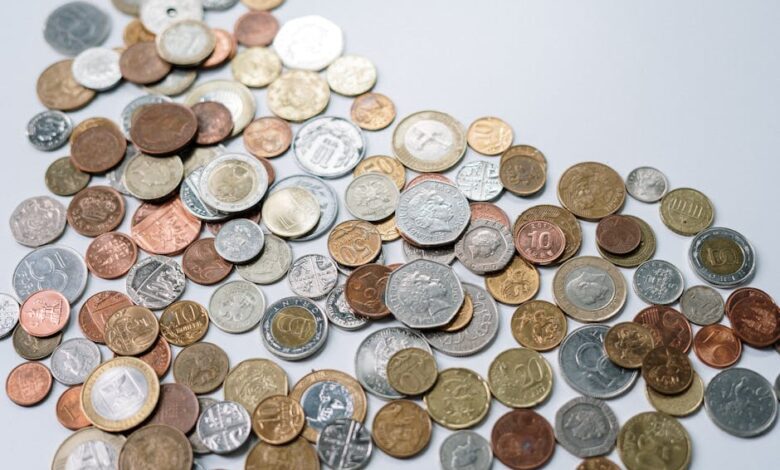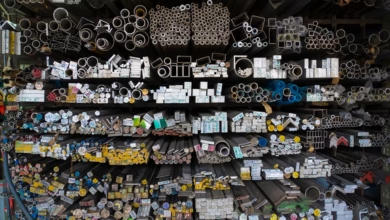Metals in Motion: Analyzing Industrial Demand and Investment Trends in Silver, Copper, and Beyond

In an increasingly complex global economy, the significance of metals extends far beyond their traditional uses, intertwining with industrial demands and investment strategies. This article explores the multifaceted role of key metals, starting with silver, which serves as both a critical component in various industrial applications and a sought-after investment asset. We will delve into the implications of copper prices as a barometer for economic health, shedding light on how fluctuations in this metal can indicate broader market trends. Additionally, we'll examine the rising demand for rare earth metals spurred by advancements in green energy technologies, highlighting the critical intersection of sustainability and resource management. As we navigate the landscape of metal investments, we will also contrast platinum and palladium to determine which metal offers a more favorable investment opportunity. Furthermore, we will discuss how the diversification of investment portfolios through metals can mitigate risks, especially in an era of rising inflation that significantly impacts the prices of both precious and industrial metals. Lastly, we will consider the future of aluminum within a sustainable economy and the effects of mining regulations on metal prices. Join us as we unpack these essential topics and gain insights into the dynamic role of metals in today’s economy.
- 1. **Silver's Dual Role: Industrial Applications and Investment Appeal**
- 2. **Copper Prices as Economic Indicators: What They Reveal About Global Health**
- 3. **Navigating the Future: The Demand for Rare Earth Metals in Green Energy Technologies**
1. **Silver's Dual Role: Industrial Applications and Investment Appeal**
Silver occupies a unique position in the market due to its dual role as both an industrial metal and a popular investment asset. On the industrial side, silver is highly valued for its excellent electrical conductivity, thermal conductivity, and reflectivity, making it indispensable in various applications. Industries such as electronics, solar energy, and medical technology rely on silver for components like circuit boards, photovoltaic cells, and antimicrobial coatings. The growing demand for renewable energy solutions, particularly solar panels, has further solidified silver's industrial significance, as these technologies require substantial amounts of the metal.
In addition to its industrial uses, silver is also a sought-after investment vehicle. Investors often turn to silver as a hedge against inflation and economic uncertainty, viewing it as a safe haven during turbulent market conditions. Silver bullion, coins, and exchange-traded funds (ETFs) provide accessible means for investors to gain exposure to the metal. Furthermore, the historical context of silver as a form of currency adds to its allure as a tangible asset.
The interplay between silver's industrial demand and its investment appeal creates a complex dynamic in its pricing. As economic growth drives industrial consumption, particularly in emerging markets, the demand for silver can rise sharply. Conversely, during periods of economic downturn, investors may flock to silver as a protective measure, further influencing its market value. This duality not only underscores silver's importance in the global economy but also highlights its potential for diverse investment strategies, making it a compelling choice for those looking to balance risk and reward in their portfolios.
2. **Copper Prices as Economic Indicators: What They Reveal About Global Health**
Copper prices are often viewed as a barometer of global economic health due to copper's widespread use in various industries, particularly construction, electronics, and manufacturing. Known as "Dr. Copper," this metal is considered a reliable indicator because its demand typically correlates with economic activity. When economies are thriving, demand for copper increases as construction projects ramp up and consumer electronics sales rise. Conversely, during economic downturns, the demand for copper tends to decline, leading to lower prices.
Several factors influence copper prices, including supply chain dynamics, production levels, and geopolitical events. For instance, disruptions in major copper-producing countries, such as Chile and Peru, can lead to price spikes due to concerns over supply shortages. Additionally, global economic indicators, such as GDP growth rates, industrial production data, and manufacturing activity, often precede changes in copper prices, making them valuable for investors and policymakers alike.
The transition to a greener economy also plays a significant role in shaping copper demand. As more countries invest in renewable energy infrastructure and electric vehicles, the need for copper is expected to increase, given its essential role in wiring and components. This shift not only supports higher copper prices but also underscores the metal's relevance in future economic trends.
In summary, monitoring copper prices provides insights into broader economic conditions, reflecting both current market dynamics and future prospects. As such, stakeholders in various sectors—ranging from investors to policymakers—pay close attention to copper price movements as they navigate the complexities of a changing global economy.
3. **Navigating the Future: The Demand for Rare Earth Metals in Green Energy Technologies**
As the world increasingly shifts towards sustainable energy solutions, the demand for rare earth metals is expected to grow significantly. These metals, which include neodymium, dysprosium, and lithium, play a crucial role in the production of various green technologies, such as electric vehicles (EVs), wind turbines, and solar panels. Their unique properties enable the efficient functioning of high-performance batteries, powerful magnets, and other essential components that are integral to renewable energy systems.
The transition to green energy is driven by a global push to reduce carbon emissions and mitigate climate change. Governments and industries are investing heavily in renewable energy infrastructure, which, in turn, amplifies the demand for rare earth metals. For instance, electric vehicles rely on rare earth elements for their batteries and motors, making them vital for the automotive industry's transformation. Similarly, wind turbines utilize rare earth magnets to enhance efficiency and power output.
However, the supply chain for rare earth metals presents challenges. A significant portion of these metals is mined and processed in a limited number of countries, leading to concerns about geopolitical risks and supply disruptions. Moreover, the environmental impact of mining operations raises questions about sustainability and the long-term viability of sourcing these materials.
As the green energy sector continues to expand, it is crucial for companies and investors to navigate these complexities. Innovations in recycling technologies and alternative materials are emerging as potential solutions to mitigate supply risks and environmental concerns. Overall, the future demand for rare earth metals will be closely tied to the pace of the energy transition and the development of sustainable practices within the mining and processing industries.
In conclusion, the intricate interplay between metals and global economic dynamics underscores their significance in both industrial applications and investment strategies. Silver, with its unique position as both a critical industrial component and a sought-after investment asset, exemplifies the dual nature of metal markets. Similarly, copper prices serve as a barometer for economic health, reflecting broader trends that impact industries and investors alike. As the world shifts towards green energy technologies, the demand for rare earth metals is poised to rise, highlighting the essential role these materials play in sustainable development.
The ongoing debate between platinum and palladium investments reveals the complexities of market preferences and their implications for investors. Furthermore, incorporating metal investments into diversified portfolios can offer a hedge against inflation, which has historically influenced the prices of both precious and industrial metals. Looking ahead, aluminum's role in fostering a sustainable economy positions it as a metal of the future, while mining regulations continue to shape the landscape and pricing of various metals.
As we navigate these evolving markets, understanding the multifaceted roles of metals is crucial for investors and industry stakeholders alike. By keeping a close eye on market trends, technological advancements, and regulatory changes, one can make informed decisions that align with both financial goals and broader economic shifts. The future of metal markets promises to be dynamic, and those who adapt to these changes will be well-positioned to capitalize on emerging opportunities.





